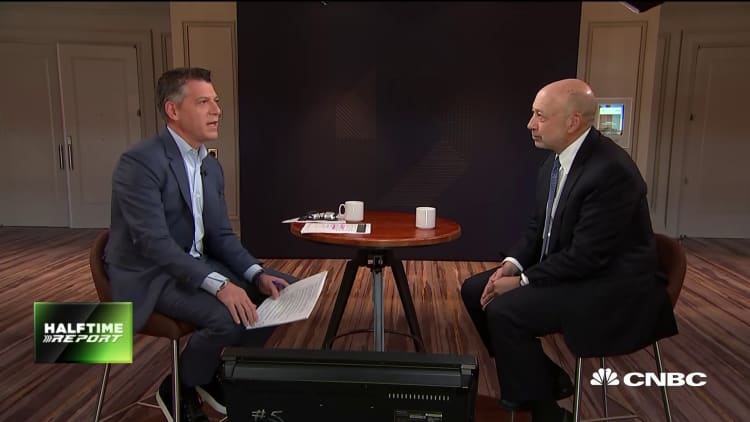Goldman Sachs wants to give away some of its most valuable software.
The investment bank spent countless hours over 14 years developing a platform called Alloy to help it access and analyze the growing set of financial databases being created across the firm. Now Goldman is taking the unusual step of making that program, as well as the language underlying it, available to the rest of Wall Street for free as open-source software in collaboration with a nonprofit called Finos.
The software and language "have grown to become critical tools within our firm across the trade lifecycle that help us price, assess and evaluate risk, clear transactions, and perform regulatory reporting," said Neema Raphael, co-chief data officer at Goldman. By making it publicly available, "we'll unlock tremendous value for the industry when we co-develop and share models."
The move is the latest step by Wall Street to follow the lead of tech giants like Google and Facebook that regularly release code to outside developers. Earlier this year, Goldman said it would put some of its trading and risk management code on GitHub, the open-source code repository. Rival bank J.P. Morgan Chase also releases code on Github for initiatives including its Quorum blockchain project.

The rise of open-source software has been underscored by recent massive acquisitions — Microsoft bought GitHub for $7.5 billion and IBM purchased Red Hat for $34 billion.
Goldman developed Alloy because of a common problem in the financial industry: Databases sprang up across the firm (there are more than 100,000 at Goldman, according to Jeff Wecker, co-chief data officer), built by different teams and using different software vendors. Analyzing far-flung datasets became onerous without a tool like Alloy that allowed for grabbing data and mapping its various relationships.
In fact, more than half of the cost of most computing projects at Goldman was simply in finding and properly extracting datasets, said Wecker.
In other instances where Goldman has developed in-house technology that could be more broadly used, it's decided to try to make money by building start-ups or partnering with outside firms. In this case, Goldman said that widespread industry adoption was the goal.
By giving it away, Goldman hopes to reduce its own costs when dealing with trading counterparties among banks and asset managers and compliance requests from regulators, Wecker said. That's because more standardization across the industry would reduce the effort needed to reconcile data across entities.
"We're using Alloy because it radically reduces the cost of wrangling disparate datasets and disparate sources of data together," Wecker said. "We believe that would be true for others, and we feel so strongly about it that we're open sourcing it to offer an opportunity for the industry to standardize around data concepts faster."
Gabriele Columbro, executive director of Finos, said he believed the step by Goldman would have a "far-reaching impact" on the financial industry.


